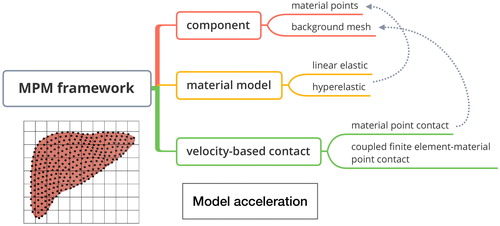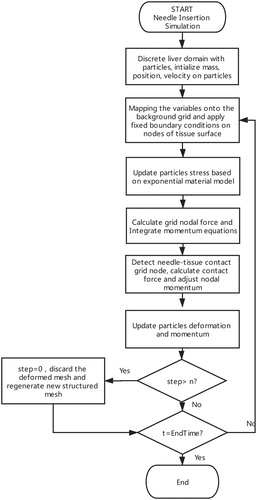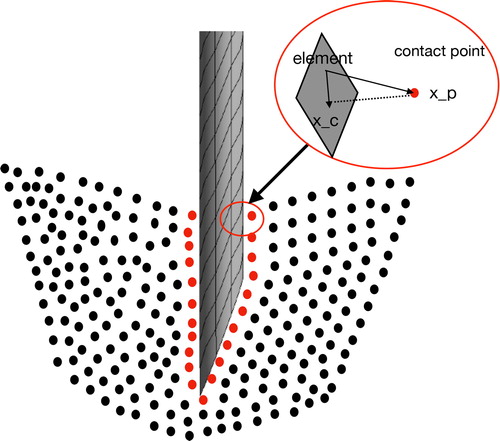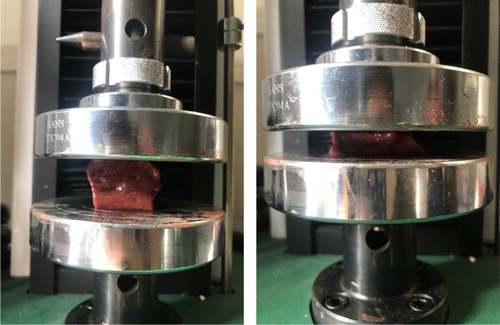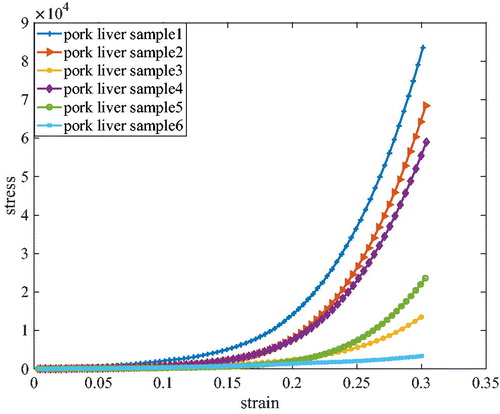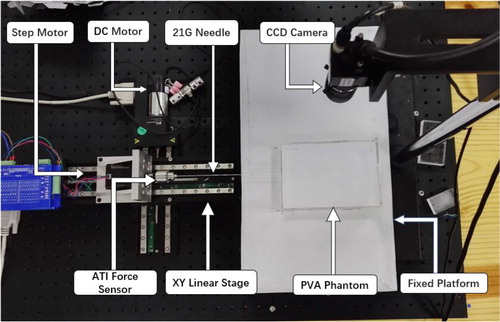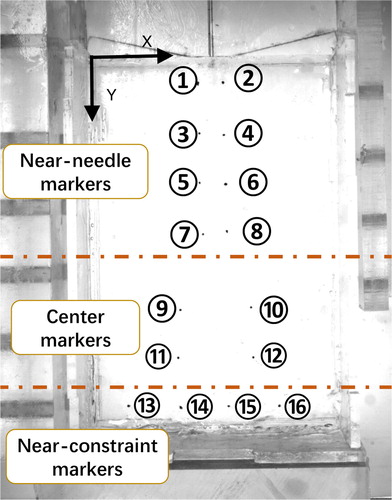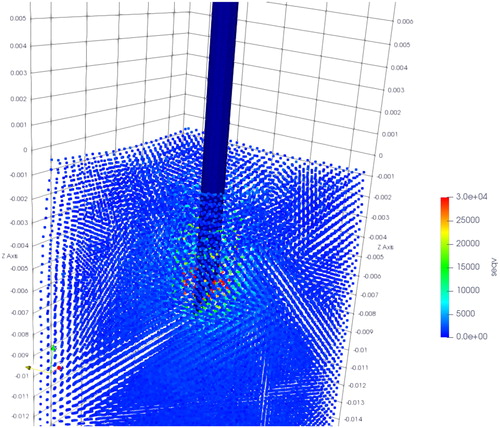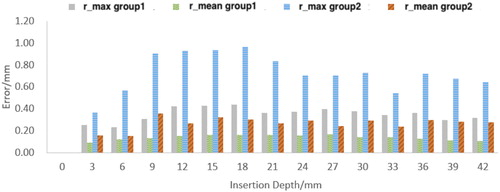Figures & data
Figure 3. Contact point detection: needle points (represented as black points) and tissue points (represented as orange points) are mapped to the same background grid nodes (represented as yellow pentagram).

Figure 6. Numerical fracture in needle insertion: the distance between the surface tissue particles are enlarged in (a) and (b), numerical fracture occurs in (c).
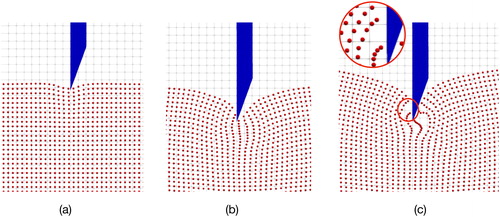
Figure 9. Comparison of exponential material model and experimental data of pork livers and PVA hydrogel.
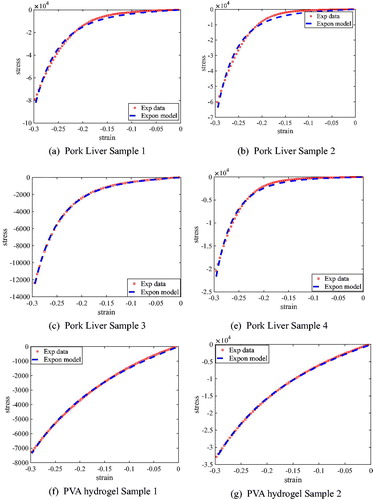
Table 1. Fitting parameters of exponential material model and residuals.
Table 2. PVA phantom parameters.
Table 3. Model accuracy evaluation of the MPM contact and CFEMP contact model.
Table 4. Maximum absolute error and mean absolute error in xy direction (group 1).
Table 5. Maximum absolute error and mean absolute error in xy direction (group 2).

